DESIGN PAPER 1 GRADE 12 QUESTIONS - AMENDED SENIOR CERTIFICATE EXAMSPAST PAPERS AND MEMOS MAY/JUNE 2018
Share via Whatsapp Join our WhatsApp Group Join our Telegram GroupDESIGN
PAPER 1
GRADE 12
AMENDED SCE PAST PAPERS AND MEMOS
MAY/JUNE 2018
INSTRUCTIONS AND INFORMATION
- This question paper consists of SIX questions.
- There are three choice questions in this question paper. Read the options carefully.
- This question paper consists of THREE sections:
SECTION A: Design literacy (30 marks)
QUESTIONS 1 to 3
SECTION B: Design history (30 marks)
QUESTION 4
SECTION C: Design in a sociocultural/environmental and sustainable context (40 marks)
QUESTIONS 5 and 6 - Read the requirements of each question carefully.
- Answer in full sentences and avoid the listing of facts. Do NOT answer in tabular form.
- Use the mark allocation to determine the time to be spent on each question.
- Do NOT repeat the same facts and examples in different questions.
- Write neatly and legibly.
QUESTIONS
SECTION A: DESIGN LITERACY
QUESTION 1: 'UNSEEN' EXAMPLES
Answer EITHER QUESTION 1.1 OR QUESTION 1.2.
1.1 
FIGURE A: Bronze, Copper and Turquoise Pendant by Mike Edelman (Maryland, USA), 2016.
Discuss FIGURE A by referring to the following:
- Use of material(s)
- Possible inspiration(s)
- Form
- Focal point
- Colour (5 x 2) [10]
OR
1.2 
FIGURE B: Heraldic Mielie Pattern Wallpaper design by Quagga (South Africa), 2012.
Analyse the use of the following in FIGURE B above:
- Line
- Tone
- Subject matter
- Balance
- Rhythm (5 x 2) [10]
QUESTION 2: COMMUNICATION THROUGH DESIGN 
FIGURE C: Makarapa by Plan International (South Africa), 2015.
2.1 Identify THREE symbols in FIGURE C above and discuss their possible meanings. (6)
2.2 Explain the message of the poster in FIGURE C above with reference to the term cultural diversity. (4) [10]
QUESTION 3
Answer EITHER QUESTION 3.1 OR QUESTION 3.2.
3.1 Refer to FIGURE D and FIGURE E below and answer the questions that follow. 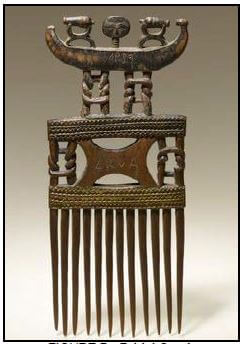
FIGURE D: Bridal Comb by Asante artist (Ghana), 1932. 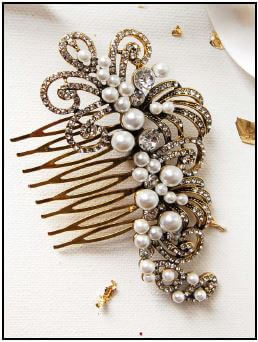
FIGURE E: Pearl Filigree Wedding Hair Comb by Highland Angel (Scotland), 2016.
Write an essay (at least ONE page) in which you compare FIGURE D with FIGURE E.
Refer to the following in your comparison:
- Possible influences
- Function
- Texture
- Pattern
- Materials (5 x 2) [10]
OR
3.2 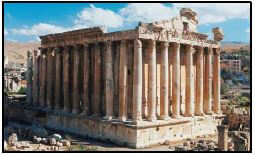
FIGURE F: Bacchus Temple, architect unknown (Baalbek, Lebanon), 3rd century CE. 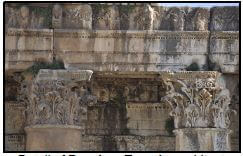
Detail of Bacchus Temple, architect unknown (Baalbek, Lebanon), 3rd century CE. 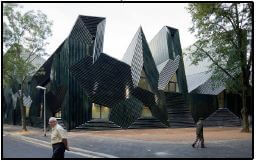
FIGURE G: Mainz Synagogue by Manuel Hertz Architects (Germany), 2010. 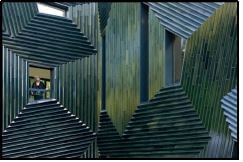
Detail of Mainz Synagogue by Manuel Hertz Architects (Germany), 2010.
Write an essay (at least ONE page) in which you compare the Classical temple in FIGURE F with the contemporary synagogue (Jewish place of worship|) in FIGURE G above. Alternatively, you may compare any Classical building with any contemporary building that you have studied.
Refer to the following in your comparison:
- Function
- Structure
- Building materials
- Influences
- Decorative elements or style of the buildings (5 x 2) [10]
TOTAL SECTION A: 30
SECTION B: DESIGN HISTORY QUESTION 4
4.1
To design is much more than simply to assemble, to order, or even to edit: it is to add value and meaning, to illuminate, to simplify, to clarify, to modify, to dignify, to dramatize, to persuade, and perhaps even to amuse. –Paul Rand |
Choose any TWO movements from the list below that reflect the quote above.
- Gothic
- Renaissance
- Baroque
- Neoclassicism
- Arts and Crafts
- Art Nouveau
- Bauhaus
- De Stijl
- Modernism
- Postmodernism
- Deconstructivism
Write an essay (at least TWO pages) in which you discuss how EACH movement reflects the quote above.
Support your answer by referring to:
- The aims and influences of EACH movement
- The stylistic characteristics of your chosen movements
- Refer to ONE example and designer from BOTH movements to motivate your statements (20)
4.2 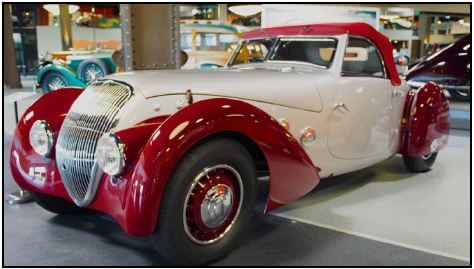
FIGURE H: Bugatti Type 57, Art Deco (Italy), 1934 to 1940. 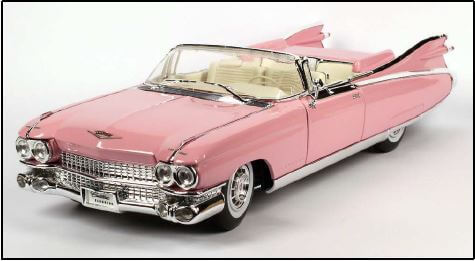
FIGURE I: Cadillac Eldorado, Pop Design (USA), 1959.
Write a comparative essay (at least ONE page) in which you discuss how FIGURE H and FIGURE I are characteristic of the design movements they represent.
Refer to the following to support your answer:
- Inspiration
- Aims
- Line
- Form
- Colour (5 x 2) (10) TOTAL SECTION B: 30
SECTION C: DESIGN IN A SOCIOCULTURAL/ENVIRONMENTAL AND SUSTAINABLE CONTEXT
QUESTION 5
Answer EITHER QUESTION 5.1 OR QUESTION 5.2.
5.1 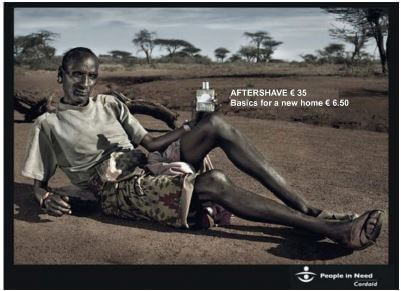
€35 = approximately R455,00; €6,50 = R84,50 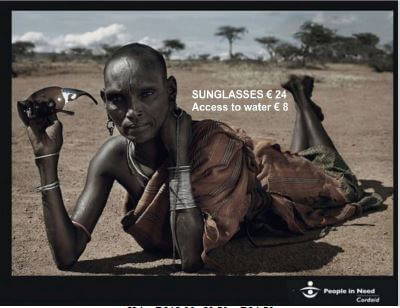
€24 = R312,00; €6,50 = R84,50
FIGURE J: Why You Can't Make It Rain Social Awareness Campaign by Saatchi & Saatchi (Netherlands), 2007.
5.1.1 Explain how the social message in the posters in FIGURE J is communicated. Refer to the following:
- Use of imagery
- Colour
- Use of juxtaposition (3 x 2) (6)
5.1.2 Write an essay (at least TWO pages) in which you discuss the work of ONE South African contemporary designer/design group
AND ONE international contemporary designer/design group who address sociocultural issues in their work.
Refer to the following in your discussion:
- Aims that relate to the concept of sociocultural design
- Name and discuss a designer/design group and ONE of his/her/their products that reflects social responsibility. (14) [20]
OR
5.2
5.2.1 Write an essay (at least ONE page) about an indigenous traditional craft that is practised in South Africa.
Refer to the following in your essay:
- The history and social functions of the traditional craft
- Materials, methods and processes
- A discussion of ONE example as well as the name(s) of the indigenous cultural community or indigenous craftsperson that produced it
- The value of practising this craft in contemporary South Africa. (10)
5.2.2 Write an essay (at least ONE page) on any ONE South African contemporary designer/design group who adapts traditional craft techniques/materials for modern usage.
Use the following structure when answering the question:
- Name the designer/group and his/her/their design product(s)
- Discuss how traditional techniques/methods and material have been applied to contemporary design and refer to specific examples to support your statements
- Discuss whether this/these product(s) make(s) a sociocultural contribution
You may NOT refer to any designer/design group that you discussed previously or design examples that appear in this question paper. (10) [20]
QUESTION 6
6.1
FIGURE K: Plastic Pollution Campaign by Surfrider (Europe), 2012. The 'food' above represents sushi rolls, Japanese seafood.
6.1.1 Discuss how the environmental warning is highlighted by the poster in FIGURE K above. (4)
6.1.2 Do you think that a poster campaign can be effective in bringing about behavioural change? Substantiate. (2)
6.2 Write an essay (at least ONE AND A HALF pages) in which you discuss the work of ONE South African contemporary designer/design group/studio and ONE international contemporary designer/design group/studio whose work addresses environmental/sustainable concerns.
Refer to the following in your discussion:
- General aims of the designer/design group/studio and his/her/their design product(s)
- Name ONE designer and his/her design and explain its impact on the environment
You may NOT refer to any designer/design group that you have discussed previously or design examples that appear in this question paper. (14) [20]
TOTAL SECTION C: 40
GRAND TOTAL: 100